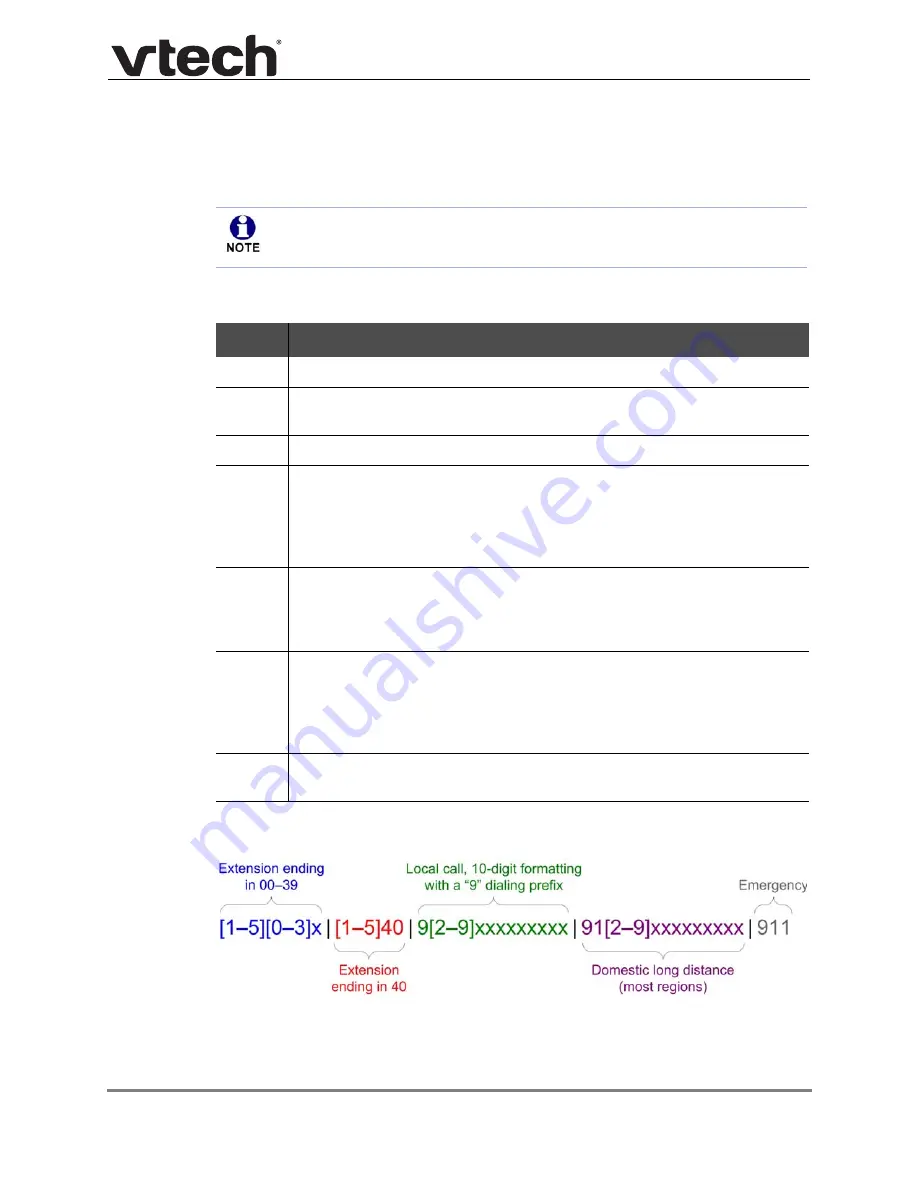
Using the WebUI
35
VCS752 Administrator and Provisioning Manual
Dial Plan
The dial plan consists of a series of dialing rules, or strings, that determine whether what
the user has dialed is valid and when the VCS752 should dial the number.
Dialing rules must consist of the elements defined in the table below.
A sample dial plan appears below.
Numbers that are dialed when forwarding a call—when the user manually fowards
a call, or a pre-configured number is dialed for Call Forward All, Call Forward–No
Answer, or Call Forward Busy—always bypass the dial plan.
Element
Description
x
Any dial pad key from 0 to 9, including # and *.
[0-9]
Any two numbers separated by a hyphen, where the second number is
greater than the first. All numbers within the range or valid, excluding # and *.
x+
An unlimited series of digits.
,
This represents the playing of a secondary dial tone after the user enters the
digit(s) specified or dials an external call prefix before the comma. For
instance, "9,xxxxxxx" means the secondary dial tone is played after the user
dials 9 until any new digit is entered. "9,3xxxxxx" means only when the digit
3 is hit would the secondary dial tone stop playing.
PX
This represents a pause of a defined time; X is the pause duration in
seconds. For instance, "P3" would represent pause duration of 3 seconds.
When "P" only is used, the pause time is the same as the Inter Digit Timeout
(see
“SIP Account Management” on page 33
(0:9)
This is a substitution rule where the first number is replaced by the second.
For example, "(4:723)xxxx" would replace "46789" with "723-6789". If the
substituted number (the first number) is empty, the second number is added
to the number dialed. For example, in "(:1)xxxxxxxxxx", the digit 1 is
appended to any 10-digit number dialed.
|
This separator is used to indicate the start of a new pattern. Can be used to
add multiple dialing rules to one pattern edit box.






























